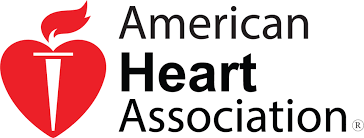Sakata Seed Helps American Heart Association Raises $44,000
Sakata Seed America Supports the AHA through its Sakata Gives Corporate Giving Program
New Release Edited by Patrick Cavanaugh
During the month of October, as part of its Sakata Gives Corporate Giving Program, Sakata Seed America, a world leader in breeding and producing vegetable and flower seed, participated in two walks, including a special Sakata-coordinated campus walk, to raise awareness and much-needed funds for the American Heart Association.
On the morning of October 20th, Sakata Seed America staff, friends and family joined the annual American Heart Association Central Coast Heart & Stroke Walk. The 5K walk commenced at the Depot Lot and continued along the scenic coastal pathway located in Monterey. More than 275 Central Coast residents and visitors gathered for the annual Heart Walk to raise life-saving funds and awareness for heart disease and stroke.
The event which included 19 teams, including Team Sakata, raised more than $44,000. Team Sakata raised $3,772 for the walk, earning the titles of Top Team, Top Company, and Top Walker (Jamie Kitz). Funds raised from the Heart Walk will benefit research, advocacy, outreach, and education.
In addition, on the morning of October 3rd the Sakata staff stepped out at their own regional offices for a companywide Heart Walk staged at seven of their campuses throughout the United States, including major locations in Yuma, AZ; Morgan Hill, CA; Salinas, CA; Woodland, CA; Ft. Myers, FL; Mt. Vernon, WA; and Burlington, WA.
A first for Sakata and the American Heart Association, Sakata’s coordinated campus walk was the “heartchild” of Jamie Kitz, Program Manager for Sakata Gives, the company’s Corporate Giving Program. Kitz said, “Partnering with strong community-minded organizations as the American Heart Association speaks to the essence of the Sakata Gives. We love engaging in our communities through activities that contribute to the betterment of both life and culture.”
To encourage and thank walkers, 400 colorful tulips were generously donated by Sun Valley Floral Farm. Participants were thrilled to walk away with gorgeous blooms that made for even happier hearts! Sakata was pleased to build awareness and camaraderie at their own facilities and blaze a new trail in fundraising for the American Heart Association.
From humble beginnings, the AHA has grown into the nation’s oldest and largest voluntary organization dedicated to fighting heart disease and stroke. A shared focus on cardiovascular health unites their more than 33 million volunteers and supporters as well as their more than 3,400 employees. According to the American Heart Association, heart disease is the No. 1 killer, and stroke ranks as the country’s No. 5 killer. For nearly 100 years, the AHA has been fighting heart disease and stroke, striving to save and improve lives.
Kelly LaPorta, Regional Director for the American Heart Association states, “It is evident that the mission of the American Heart Association is a mission that is near and dear to the hearts of the Sakata Family. Heart Walk is our premiere event for raising funds to save lives from heart disease and stroke and Sakata has fielded a team for the past six years. Happily, Sakata wanted to do more. They wanted to be sure they could participate at the highest level and raise the most funds and awareness—hence we decided to co-host our first coordinated campus walk for Sakata and it was a huge success!”
Overall, roughly 110 Sakata employees participated in the two walks and raised over $4,900 for the cause.
For more information on the Heart & Stroke Walk visit www.centralcoastheartwalk.org
















